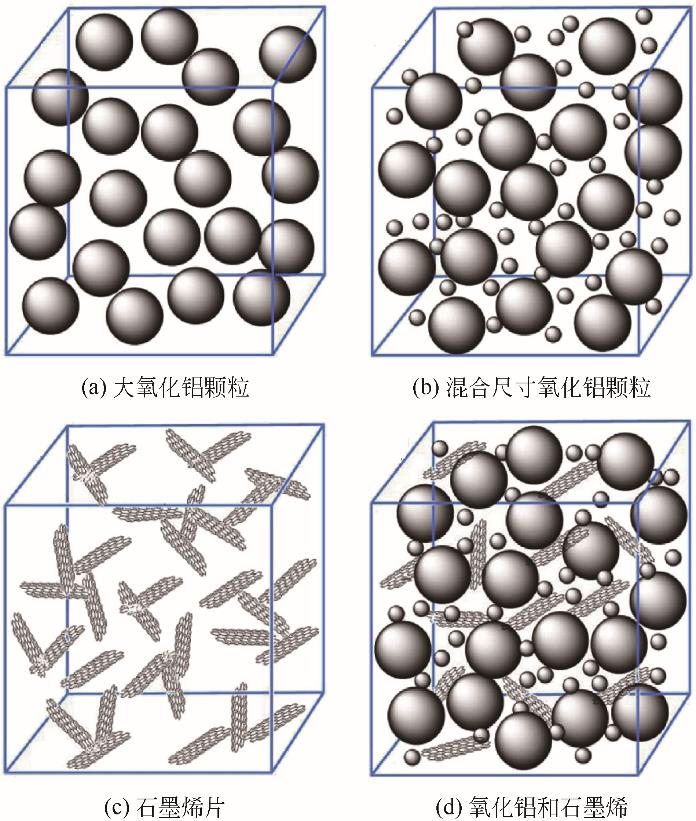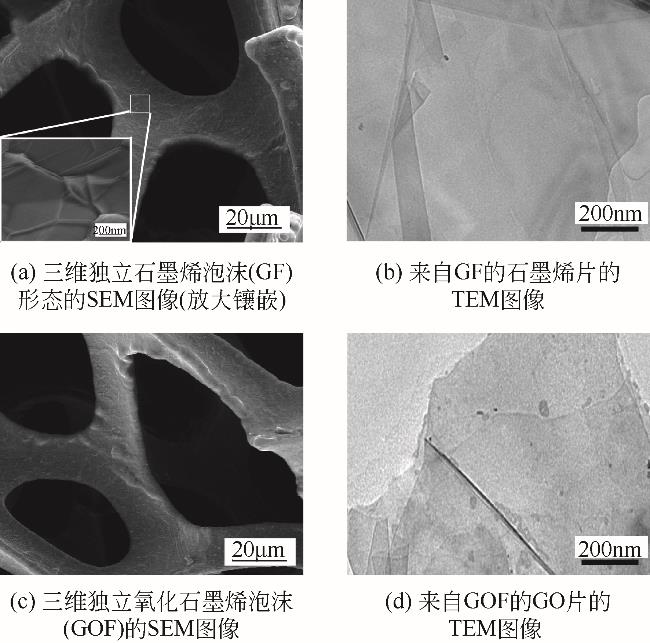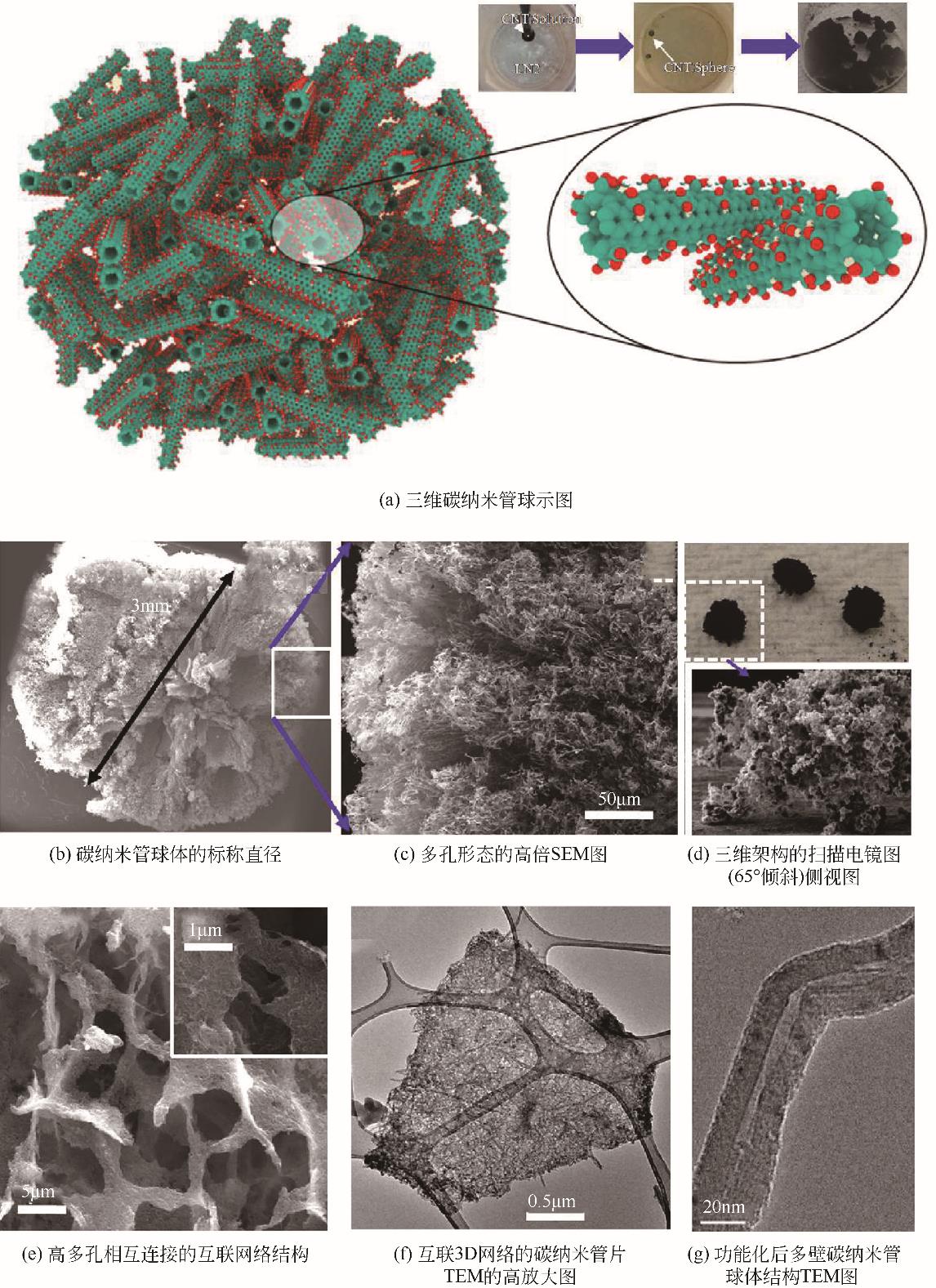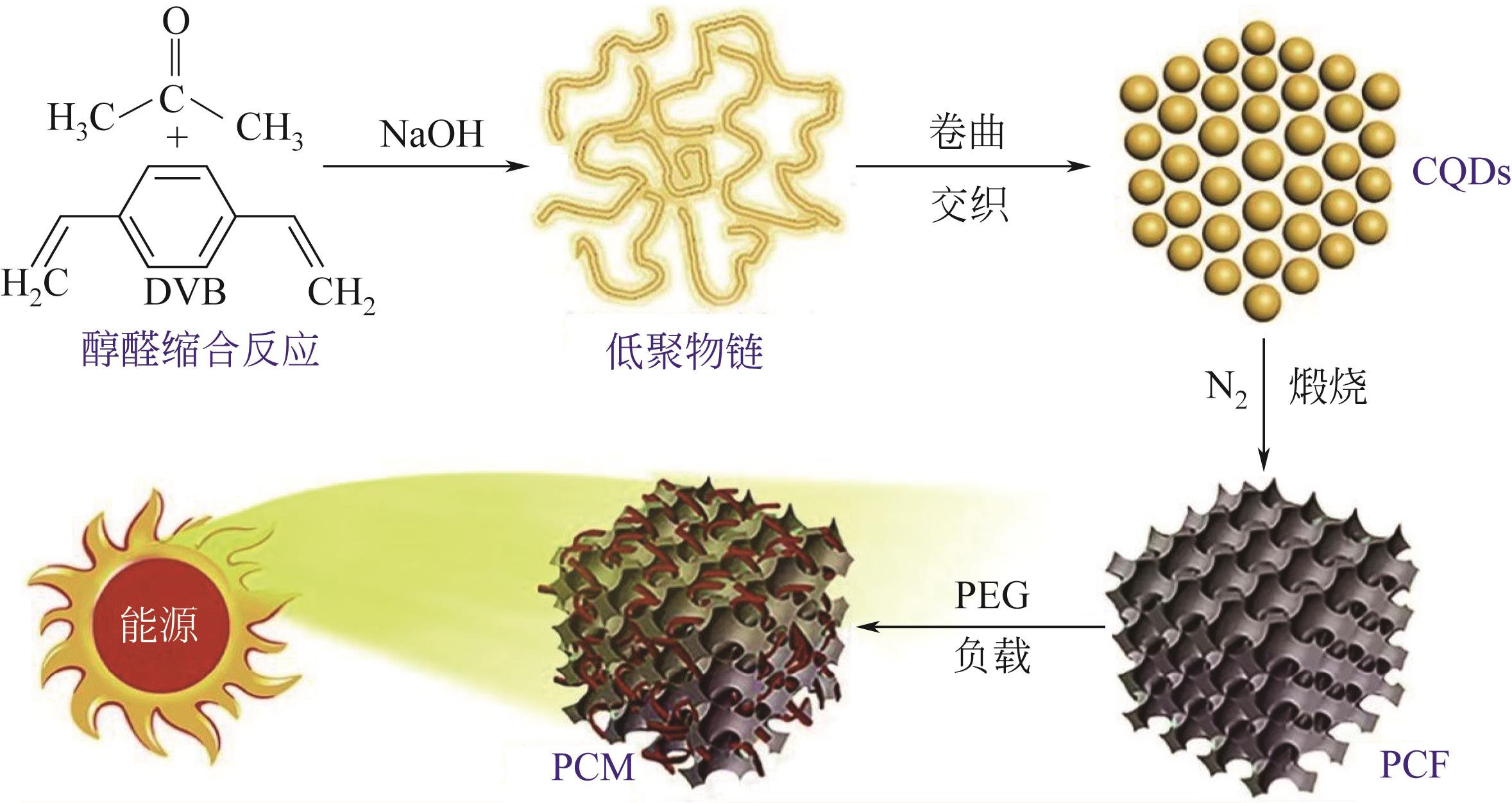化工进展 ›› 2022, Vol. 41 ›› Issue (S1): 269-281.DOI: 10.16085/j.issn.1000-6613.2021-1247
聚合物基热界面材料与导热性能研究进展
陈沛嘉1( ), 葛鑫2, 梁伟杰3, 尹爽1, 张志聪1, 吕健儿1, 刘卫东4(
), 葛鑫2, 梁伟杰3, 尹爽1, 张志聪1, 吕健儿1, 刘卫东4( ), 陈友鹏4(
), 陈友鹏4( ), 葛建芳1(
), 葛建芳1( )
)
- 1.仲恺农业工程学院化学化工学院,广东 广州 510225
2.广东工业大学材料与能源学院,广东 广州 510006
3.西北工业大学材料科学与工程学院,陕西 西安 710072
4.广州南洋理工职业学院,广东 广州 510920
-
收稿日期:2021-06-15修回日期:2022-01-04出版日期:2022-10-20发布日期:2022-11-10 -
通讯作者:刘卫东,陈友鹏,葛建芳 -
作者简介:陈沛嘉(1996—),男,硕士研究生,研究方向为导热材料。E-mail:440582b26sf.cdb@sina.cn。 -
基金资助:广东省科技计划重大专项(2015B090925022);广东大学生科技创新培育专项资金(pdjh2021a0248);广东省普通高校重点领域专项(智能制造)(2020ZDZX2079)
Research progress of polymer-based thermal interface materials and thermal conductivity properties
CHEN Peijia1( ), GE Xin2, LIANG Weijie3, YIN Shuang1, ZHANG Zhicong1, LYU Jianer1, LIU Weidong4(
), GE Xin2, LIANG Weijie3, YIN Shuang1, ZHANG Zhicong1, LYU Jianer1, LIU Weidong4( ), CHEN Youpeng4(
), CHEN Youpeng4( ), GE Jianfang1(
), GE Jianfang1( )
)
- 1.College of Chemistry and Chemical Engineering, Zhongkai University of Agricultural Engineering, Guangzhou 510225, Guangdong, China
2.College of Materials and Energy, Guangdong University of Technology, Guangzhou 510006, Guangdong, China
3.School of Materials Science and Engineering, Northwestern Polytechnical University, Xi'an 710072, Shaanxi, China
4.Guangzhou Nanyang Polytechnic Vocational College, Guangzhou 510920, Guangdong, China
-
Received:2021-06-15Revised:2022-01-04Online:2022-10-20Published:2022-11-10 -
Contact:LIU Weidong, CHEN Youpeng, GE Jianfang
摘要:
随着电子产品的小型化、集成化和功能化发展,功率密度及热流密度急剧上升,器件内巨大的散热和温压压力使电子设备的寿命和可靠性受到影响,因此对器件在运行过程中如何有效散热提出了更为苛刻的要求。开发及使用高性能导热基复合材料(热界面材料,TIM)降低接触热阻是解决电子设备散热问题的有效途径之一,热界面材料创新与优化备受关注。本文从基本的导热机理出发,阐述聚合物基热界面材料结构及导热强化方面最新进展,讨论导热填料和聚合物基体对复合材料性能的影响。重点对微纳结构的导热强化(协同)作用、构筑3D高导热微结构、导热填料和基质间的界面微结构和导热互穿网络结构等进行讨论,为设计高性能导热结构、制备开发新型高性能TIM提供参考。
中图分类号:
引用本文
陈沛嘉, 葛鑫, 梁伟杰, 尹爽, 张志聪, 吕健儿, 刘卫东, 陈友鹏, 葛建芳. 聚合物基热界面材料与导热性能研究进展[J]. 化工进展, 2022, 41(S1): 269-281.
CHEN Peijia, GE Xin, LIANG Weijie, YIN Shuang, ZHANG Zhicong, LYU Jianer, LIU Weidong, CHEN Youpeng, GE Jianfang. Research progress of polymer-based thermal interface materials and thermal conductivity properties[J]. Chemical Industry and Engineering Progress, 2022, 41(S1): 269-281.
| 分类 | 贡献项 | 贡献率/% |
|---|---|---|
| 对流项(9%) | 动能 | 53 |
| 短程范德华势能 | 36 | |
| 长程静电势能 | 11 | |
| 维里项(91%) | 范德华作用力 | 94 |
| 实际限定空间短程静电作用力 | 6 | |
| 傅里叶空间长程静电作用力 | 可忽略 | |
| 键伸缩力 | 可忽略 | |
| 角弯曲力 | 可忽略 |
表1 不同热流单元的导热贡献率
| 分类 | 贡献项 | 贡献率/% |
|---|---|---|
| 对流项(9%) | 动能 | 53 |
| 短程范德华势能 | 36 | |
| 长程静电势能 | 11 | |
| 维里项(91%) | 范德华作用力 | 94 |
| 实际限定空间短程静电作用力 | 6 | |
| 傅里叶空间长程静电作用力 | 可忽略 | |
| 键伸缩力 | 可忽略 | |
| 角弯曲力 | 可忽略 |
| 填料 | 基体 | 体积分数/% | 增强倍数/% |
|---|---|---|---|
| 多壁CNT | 硅油 | 1.0 | 160 |
| 单壁CNT | 环氧树脂 | 1.0(质量分数) | 125 |
| 单壁CNT | 环氧树脂 | 5.0(质量分数) | 200 |
| GNPs | 环氧树脂 | 25.0 | 3000 |
| 氧化石墨纳米粒子 | 乙二醇,石蜡 | 5.0 | 30~80 |
| GO | 环氧树脂 | 5.0(质量分数) | 400 |
| 石墨烯 | 银环氧树脂 | 5.0 | 500 |
| 石墨烯 | 环氧树脂 | 5.0 | 1000 |
表2 纳米碳材料的导热增强作用
| 填料 | 基体 | 体积分数/% | 增强倍数/% |
|---|---|---|---|
| 多壁CNT | 硅油 | 1.0 | 160 |
| 单壁CNT | 环氧树脂 | 1.0(质量分数) | 125 |
| 单壁CNT | 环氧树脂 | 5.0(质量分数) | 200 |
| GNPs | 环氧树脂 | 25.0 | 3000 |
| 氧化石墨纳米粒子 | 乙二醇,石蜡 | 5.0 | 30~80 |
| GO | 环氧树脂 | 5.0(质量分数) | 400 |
| 石墨烯 | 银环氧树脂 | 5.0 | 500 |
| 石墨烯 | 环氧树脂 | 5.0 | 1000 |
| 1 | MU Q H, FENG S Y, DIAO G Z. Thermal conductivity of silicone rubber filled with ZnO[J]. Polymer Composites, 2007, 28(2): 125-130. |
| 2 | 安磊, 陈立飞, 谢华清, 等. 碳纳米管与石墨烯协同提高导热硅脂热性能[J]. 工程热物理学报, 2021, 42(3): 745-751. |
| AN Lei, CHEN Lifei, XIE Huaqing, et al. Synergistic improvement of thermal properties of thermal conductive silicone grease by carbon nanotubes and graphene[J]. Journal of Engineering Thermophysics, 2021, 42(3): 745-751. | |
| 3 | JEN Y M, HUANG J C. Synergistic effect on the thermomechanical and electrical properties of epoxy composites with the enhancement of carbon nanotubes and graphene nano platelets[J]. Materials, 2019, 12(2): 255. |
| 4 | HUSSEIN S I, ABD-ELNAIEM A M, ASAFA T B, et al. Effect of incorporation of conductive fillers on mechanical properties and thermal conductivity of epoxy resin composite[J]. Applied Physics A, 2018, 124(7): 1-9. |
| 5 | 张凯, 桂泰江, 吴连锋, 等. 导热绝缘聚合物复合材料的研究进展[J]. 材料导报, 2021, 35(S1): 571-575. |
| ZHANG Kai, GUI Taijiang, WU Lianfeng, et al. Research progress of thermal conductive and electrical insulating polymer composites[J]. Materials Reports, 2021, 35(S1): 571-575. | |
| 6 | NOH Y J, KIM H S, KU B C, et al. Thermal conductivity of polymer composites with geometric characteristics of carbon allotropes [J]. Advanced Engineering Materials, 2016, 18(7): 1127-1132. |
| 7 | CHEN H Y, GINZBURG V V, YANG J, et al. Thermal conductivity of polymer-based composites: fundamentals and applications[J]. Progress in Polymer Science, 2016, 59: 41-85. |
| 8 | HUANG C L, QIAN X, YANG R G. Thermal conductivity of polymers and polymer nanocomposites[J]. Materials Science and Engineering R: Reports, 2018, 132: 1-22. |
| 9 | 颜学俊. 层状材料热传导性质的理论和实验研究[D]. 南京: 南京大学, 2017. |
| YAN Xuejun. Theoretical and experimental studies on the thermal conduction properties of layered materials[D]. Nanjing: Nanjing University, 2017. | |
| 10 | ROY A K, FARMER B L, VARSHNEY V, et al. Importance of interfaces in governing thermal transport in composite materials: modeling and experimental perspectives[J]. ACS Applied Materials & Interfaces, 2012, 4(2): 545-563. |
| 11 | LIN S C, CAI Z L, WANG Y, et al. Tailored morphology and highly enhanced phonon transport in polymer fibers: a multiscale computational framework[J]. NPJ Computational Materials, 2019, 5: 126. |
| 12 | DHANDAYUTHAPANI B, YOSHIDA Y, MAEKAWA T, et al. Polymeric scaffolds in tissue engineering application: a review[J]. International Journal of Polymer Science, 2011: 1-19. |
| 13 | KASHFIPOUR M A, MEHRA N, ZHU J H. A review on the role of interface in mechanical, thermal, and electrical properties of polymer composites[J]. Advanced Composites and Hybrid Materials, 2018, 1(3): 415-439. |
| 14 | XIE X, LI D Y, TSAI T H, et al. Thermal conductivity, heat capacity, and elastic constants of water-soluble polymers and polymer blends[J]. Macromolecules, 2016, 49(3): 972-978. |
| 15 | WANG X J, HO V, SEGALMAN R A, et al. Thermal conductivity of high-modulus polymer fibers[J]. Macromolecules, 2013, 46(12): 4937-4943. |
| 16 | SHRESTHA R, LI P F, CHATTERJEE B, et al. Crystalline polymer nanofibers with ultra-high strength and thermal conductivity[J]. Nature Communications, 2018, 9: 1664. |
| 17 | MU L W, LI Y F, MEHRA N, et al. Expedited phonon transfer in interfacially constrained polymer chain along self-organized amino acid crystals[J]. ACS Applied Materials & Interfaces, 2017, 9(13): 12138-12145. |
| 18 | 李寒梅, 陈蓼璞, 朱维维, 等. 高导热聚合物复合材料结构与性能研究进展[J]. 化学研究, 2018, 29(4): 429-440. |
| LI Hanmei, CHEN Liaopu, ZHU Weiwei, et al. Recent progress of structure and properties of high thermal conductive polymer composites[J]. Chemical Research, 2018, 29(4): 429-440. | |
| 19 | 苏政. 取向结构聚合物基导热材料的设计、制备与性能研究[D]. 合肥: 中国科学技术大学, 2019. |
| SU Zheng. Design, fabrication, and performance research of polymer-based thermal conductive material with oriented structure[D]. Hefei: University of Science and Technology of China, 2019. | |
| 20 | XIAO G, DI J T, LI H, et al. Highly thermally conductive, ductile biomimetic boron nitride/aramid nanofiber composite film[J]. Composites Science and Technology, 2020, 189: 108021. |
| 21 | HWANG Y J, KIM J M, KIM L S, et al. Epoxy-based thermally conductive adhesives with effective alumina and boron nitride for superconducting magnet[J]. Composites Science and Technology, 2020, 200: 108456. |
| 22 | 苏会芳. 分子模拟法对石墨烯/丁苯橡胶复合材料以及环烯烃聚合物结构与性能的研究[D]. 北京: 北京化工大学, 2017. |
| SU Huifang. Molecular simulation study on the structure and properties of graphene/styrene butadiene rubber composites and cyclic olefin copolymer[D]. Beijing: Beijing University of Chemical Technology, 2017. | |
| 23 | GU A, WU J, SHEN L M, et al. High-strength GO/PA66 nanocomposite fibers via in situ precipitation and polymerization[J]. Polymers, 2021, 13(11): 1688. |
| 24 | 李颖, 颜春, 刘玲, 等. 纳米粒子增强碳纤维复合材料界面性能的研究进展[J]. 塑料科技, 2014, 42(9): 111-116. |
| LI Ying, YAN Chun, LIU Ling, et al. Research progress on interfacial properties of carbon fiber composites reinforced by nanoparticles[J]. Plastics Science and Technology, 2014, 42(9): 111-116. | |
| 25 | QUILL T J, SMITH M K, ZHOU T, et al. Thermal and mechanical properties of 3D printed boron nitride—ABS composites[J]. Applied Composite Materials, 2018, 25(5): 1205-1217. |
| 26 | 邹德晓, 江平开, 黄兴溢. 微纳多级氧化铝/环氧复合材料的性能研究[J]. 绝缘材料, 2020, 53(1): 16-21. |
| ZOU Dexiao, JIANG Pingkai, HUANG Xingyi. Properties of hierarchical structured micro@nano-Al2O3/epoxy composite[J]. Insulating Materials, 2020, 53(1): 16-21. | |
| 27 | HAN Z D, FINA A. Thermal conductivity of carbon nanotubes and their polymer nanocomposites: a review[J]. Progress in Polymer Science, 2011, 36(7): 914-944. |
| 28 | SHAHIL K M F, BALANDIN A A. Thermal properties of graphene and multilayer graphene: applications in thermal interface materials[J]. Solid State Communications, 2012, 152(15): 1331-1340. |
| 29 | WEI Y, XIE H Q, YIN L Q, et al. Exceptionally high thermal conductivity of thermal grease: synergistic effects of graphene and alumina[J]. International Journal of Thermal Sciences, 2015, 91: 76-82. |
| 30 | YANG S Y, LIN W N, HUANG Y L, et al. Synergetic effects of graphene platelets and carbon nanotubes on the mechanical and thermal properties of epoxy composites[J]. Carbon, 2011, 49(3): 793-803. |
| 31 | ZHOU W Y, YU D M, WANG C F, et al. Effect of filler size distribution on the mechanical and physical properties of alumina-filled silicone rubber[J]. Polymer Engineering & Science, 2008, 48(7): 1381-1388. |
| 32 | OTSUJI T, BOUBANGA TOMBET S A, SATOU A, et al. Graphene materials and devices in terahertz science and technology[J]. MRS Bulletin, 2012, 37(12): 1235-1243. |
| 33 | 葛鑫, 陈循军, 吴淑芳, 等. 聚合物/氮化硼填充型导热界面材料研究进展[J]. 广州化工, 2017, 45(10): 7-11. |
| GE Xin, CHEN Xunjun, WU Shufang, et al. Research progress on thermal interface materials filled by BN[J]. Guangzhou Chemical Industry, 2017, 45(10): 7-11. | |
| 34 | XUE S, LEI C X, LIU D Y, et al. Thermo-conductive phase change materials with binary fillers of core-shell-like distribution[J]. Composites Part A: Applied Science and Manufacturing, 2021, 144: 106326. |
| 35 | BIAN W C, YAO T, CHEN M, et al. The synergistic effects of the micro-BN and nano-Al2O3 in micro-nano composites on enhancing the thermal conductivity for insulating epoxy resin[J]. Composites Science and Technology, 2018, 168: 420-428. |
| 36 | GÜLER Ö, BAĞCI N. A short review on mechanical properties of graphene reinforced metal matrix composites[J]. Journal of Materials Research and Technology, 2020, 9(3): 6808-6833. |
| 37 | TAO Z C, WANG H B, LI X F, et al. Expanded graphite/polydimethylsiloxane composites with high thermal conductivity[J]. Journal of Applied Polymer Science, 2017, 134(21). |
| 38 | 吴召洪. 高性能石墨烯基导热和应变传感复合材料的应用研究[D]. 合肥: 中国科学技术大学, 2019. |
| WU Zhaohong. Applications exploration of graphene for high-performance thermal conductive and strain sensing composites[D]. Hefei: University of Science and Technology of China, 2019. | |
| 39 | 邹得球, 马先锋, 刘小诗, 等. 石墨烯在相变材料中的研究进展[J]. 化工进展, 2017, 36(5): 1743-1754. |
| ZOU Deqiu, MA Xianfeng, LIU Xiaoshi, et al. Research progress on graphene in phase change materials[J]. Chemical Industry and Engineering Progress, 2017, 36(5): 1743-1754. | |
| 40 | 李京超, 赵秀英, 嵇小旺, 等. 石墨烯/氧化铝微-纳杂化网络及导热电绝缘硅橡胶复合材料[J]. 绝缘材料, 2021, 54(2): 49-55. |
| LI Jingchao, ZHAO Xiuying, JI Xiaowang, et al. Graphene/alumina micro-nano hybrid network and thermal conductive and electrical insulating silicone rubber composites[J]. Insulating Materials, 2021, 54(2): 49-55. | |
| 41 | KHAYYAM H, JAZAR R N, NUNNA S, et al. PAN precursor fabrication, applications and thermal stabilization process in carbon fiber production: experimental and mathematical modelling[J]. Progress in Materials Science, 2020, 107: 100575. |
| 42 | WANG S R, TAMBRAPARNI M, QIU J J, et al. Thermal expansion of graphene composites[J]. Macromolecules, 2009, 42(14): 5251-5255. |
| 43 | CHU K, WANG X H, LI Y B, et al. Thermal properties of graphene/metal composites with aligned graphene[J]. Materials & Design, 2018, 140: 85-94. |
| 44 | YANG X T, LIANG C B, MA T B, et al. A review on thermally conductive polymeric composites: classification, measurement, model and equations, mechanism and fabrication methods[J]. Advanced Composites and Hybrid Materials, 2018, 1(2): 207-230. |
| 45 | CUI Q Y, YU C W, HAO J J, et al. Ultrahigh thermal conductivity copper/graphite membrane composites prepared by tape casting with hot-pressing sintering[J]. Materials Letters, 2018, 231: 60-63. |
| 46 | 高鑫, 岳红彦, 郭二军, 等. 三维石墨烯复合材料的制备及其在超级电容器领域的研究现状[J]. 材料导报, 2017, 31(1): 25-29. |
| GAO Xin, YUE Hongyan, GUO Erjun, et al. Preparation and applications of three-dimensional graphene composites in supercapacitors[J]. Materials Review, 2017, 31(1): 25-29. | |
| 47 | CHRISTENSEN A, GRAHAM S. Thermal effects in packaging high power light emitting diode arrays[J]. Applied Thermal Engineering, 2009, 29(2/3): 364-371. |
| 48 | NGUYEN N A, BOWLAND C C, NASKAR A K. A general method to improve 3D-printability and inter-layer adhesion in lignin-based composites[J]. Applied Materials Today, 2018, 12: 138-152. |
| 49 | JI H X, SELLAN D P, PETTES M T, et al. Enhanced thermal conductivity of phase change materials with ultrathin-graphite foams for thermal energy storage[J]. Energy Environmental Science, 2014, 7(3): 1185-1192. |
| 50 | ZHANG L, ZHOU K C, WEI Q, et al. Thermal conductivity enhancement of phase change materials with 3D porous diamond foam for thermal energy storage[J]. Applied Energy, 2019, 233/234: 208-219. |
| 51 | PETTES M T, JI H X, RUOFF R S, et al. Thermal transport in three-dimensional foam architectures of few-layer graphene and ultrathin graphite[J]. Nano Letters, 2012, 12(6): 2959-2964. |
| 52 | WILSON P M, MBAH G N, SMITH T G, et al. Three-dimensional periodic graphene nanostructures[J]. Journal of Materials Chemistry C, 2014, 2(10): 1879. |
| 53 | YIN J, LI X M, ZHOU J X, et al. Ultralight three-dimensional boron nitride foam with ultralow permittivity and superelasticity[J]. Nano Letters, 2013, 13(7): 3232-3236. |
| 54 | HUANG Z Y, CHEN H H, HUANG Y, et al. Ultra-broadband wide-angle terahertz absorption properties of 3D graphene foam[J]. Advanced Functional Materials, 2018, 28(2): 1704363. |
| 55 | 姜文政, 林瑛, 江平开, 等. 三维氮化硼结构及其导热绝缘聚合物纳米复合材料[J]. 电气工程学报, 2021, 16(2): 12-24. |
| JIANG Wenzheng, LIN Ying, JIANG Pingkai, et al. Three-dimensional structured boron nitride and its thermally conductive and electrically insulating composites[J]. Journal of Electrical Engineering, 2021, 16(2): 12-24. | |
| 56 | LEI Y L, CHEN F, LUO Y J, et al. Synthesis of three-dimensional graphene oxide foam for the removal of heavy metal ions[J]. Chemical Physics Letters, 2014, 593: 122-127. |
| 57 | NAG A, RAIDONGIA K, HEMBRAM K P, et al. Graphene analogues of BN: novel synthesis and properties[J]. ACS Nano, 2010, 4(3): 1539-1544. |
| 58 | ZHAO L H, YAN L, WEI C M, et al. Synergistic enhanced thermal conductivity of epoxy composites with boron nitride nanosheets and microspheres[J]. The Journal of Physical Chemistry C, 2020, 124(23): 12723-12733. |
| 59 | LOEBLEIN M, BOLKER A, TSANG S H, et al. 3D graphene-infused polyimide with enhanced electrothermal performance for long-term flexible space applications[J]. Small, 2015, 11(48): 6425-6434. |
| 60 | KOIZUMI R, HART A H C, BRUNETTO G, et al. Mechano-chemical stabilization of three-dimensional carbon nanotube aggregates[J]. Carbon, 2016, 110: 27-33. |
| 61 | 董雨菲, 马建中, 刘超, 等. SiO2的功能化改性及其与聚合物基体的界面研究进展[J]. 材料导报, 2019, 33(11): 1910-1918. |
| DONG Yufei, MA Jianzhong, LIU Chao, et al. Research progress on functional modification of SiO2 and its interface with polymer matrix[J]. Materials Reports, 2019, 33(11): 1910-1918. | |
| 62 | CUI W, DU F P, ZHAO J C, et al. Improving thermal conductivity while retaining high electrical resistivity of epoxy composites by incorporating silica-coated multi-walled carbon nanotubes[J]. Carbon, 2011, 49(2): 495-500. |
| 63 | 胡康, 范金辰, 闵宇霖, 等. 功能化六方BN纳米片/聚乙烯醇复合材料的制备及力学性能[J]. 复合材料学报, 2018, 35(5): 1073-1079. |
| HU Kang, FAN Jinchen, MIN Yulin, et al. Preparation and mechanical properties of functionalized BN nanoflakes/polyvinyl alcohol composites[J]. Acta Materiae Compositae Sinica, 2018, 35(5): 1073-1079. | |
| 64 | 陈守丽, 蔡会武, 刘圣楠, 等. 改性氮化硼/环氧树脂复合材料的制备及性能研究[J]. 绝缘材料, 2019, 52(12): 19-22. |
| CHEN Shouli, CAI Huiwu, LIU Shengnan, et al. Preparation and performance of modified boron nitride/epoxy resin composites[J]. Insulating Materials, 2019, 52(12): 19-22. | |
| 65 | AHN K, KIM K, KIM J. Fabrication of surface-treated BN/ETDS composites for enhanced thermal and mechanical properties[J]. Ceramics International, 2015, 41(8): 9488-9495. |
| 66 | 肖超. 三维导热网络的构筑及其环氧树脂复合材料性能研究[D]. 合肥: 中国科学技术大学, 2020. |
| XIAO Chao. Study on the construction of three-dimensional thermally conductive network and properties of the corresponding epoxy composites[D]. Hefei: University of Science and Technology of China, 2020. | |
| 67 | ZHANG Y H, HEO Y J, SON Y R, et al. Recent advanced thermal interfacial materials: a review of conducting mechanisms and parameters of carbon materials[J]. Carbon, 2019, 142: 445-460. |
| 68 | ZHOU W Y, QI S H, TU C C, et al. Effect of the particle size of Al2O3 on the properties of filled heat-conductive silicone rubber[J]. Journal of Applied Polymer Science, 2007, 104(2): 1312-1318. |
| 69 | SHI S, XU T, WANG D W, et al. The difference in molecular orientation and interphase structure of SiO2/shape memory polyurethane in original, programmed and recovered states during shape memory process[J]. Polymers, 2020, 12(9): 1994. |
| 70 | 封伟, 张志兴, 张飞, 等. 一种基于石墨化聚多巴胺包覆金属粒子的高导热复合材料的制备方法: CN112280541A[P]. 2021-01-29. |
| FENG Wei, ZHANG Zhixing, ZHANG Fei, et al. Preparation method of high-thermal-conductivity composite material based on graphitized polydopamine coated metal particles: CN112280541A[P]. 2021-01-29. | |
| 71 | YUAN H, WANG Y, LI T, et al. Highly thermal conductive and electrically insulating polymer composites based on polydopamine-coated copper nanowire[J]. Composites Science and Technology, 2018, 164: 153-159. |
| 72 | RYU S, OH T, KIM J. Surface modification of a BN/ETDS composite with aniline trimer for high thermal conductivity and excellent mechanical properties[J]. RSC Advances, 2018, 8(40): 22846-22852. |
| 73 | ZHOU S T, LEI Y Z, ZOU H W, et al. High thermally conducting composites obtained via in situ exfoliation process of expandable graphite filled polyamide 6[J]. Polymer Composites, 2013, 34(11): 1816-1823. |
| 74 | RAULO A, SUIN S, PARIA S, et al. Expanded graphite (EG) as a potential filler in the reduction of percolation threshold of multiwall carbon nanotubes (MWCNT) in the PMMA/HDPE/EG/MWCNT nanocomposites[J]. Polymer Composites, 2016, 37(7): 2070-2082. |
| 75 | ZHU B L, MA J, WU J, et al. Study on the properties of the epoxy-matrix composites filled with thermally conductive AlN and BN ceramic particles[J]. Journal of Applied Polymer Science, 2010, 118(5): 2754-2764. |
| 76 | HE S J, LIN Y K, CHEN L, et al. Improvement in thermal conductivity and mechanical properties of ethylene-propylene-diene monomer rubber by expanded graphite[J]. Polymer Composites, 2017, 38(5): 870-876. |
| 77 | WU B Y, CHEN R Y, FU R L, et al. Low thermal expansion coefficient and high thermal conductivity epoxy/Al2O3/T-ZnO w composites with dual-scale interpenetrating network structure[J]. Composites Part A: Applied Science and Manufacturing, 2020, 137: 105993. |
| 78 | JAYASINGHE J M A R B, DE SILVA R T, DE SILVA R M, et al. Effect of networked hybridized nanoparticle reinforcement on the thermal conductivity and mechanical properties of natural rubber composites[J]. RSC Advances, 2019, 9(2): 636-644. |
| 79 | CHEN X, GAO H Y, YANG M, et al. Highly graphitized 3D network carbon for shape-stabilized composite PCMs with superior thermal energy harvesting[J]. Nano Energy, 2018, 49: 86-94. |
| 80 | YANG J, TANG L S, BAO R Y, et al. Hybrid network structure of boron nitride and graphene oxide in shape-stabilized composite phase change materials with enhanced thermal conductivity and light-to-electric energy conversion capability[J]. Solar Energy Materials and Solar Cells, 2018, 174: 56-64. |
| 81 | HUANG X, LIN Y X, FANG G Y. Thermal properties of polyvinyl butyral/graphene composites as encapsulation materials for solar cells[J]. Solar Energy, 2018, 161: 187-193. |
| 82 | ZHANG J, LEI W W, LIU D, et al. Synergistic influence from the hybridization of boron nitride and graphene oxide nanosheets on the thermal conductivity and mechanical properties of polymer nanocomposites[J]. Composites Science and Technology, 2017, 151: 252-257. |
| 83 | HE X X, HUANG Y, LIU Y, et al. Improved thermal conductivity of polydimethylsiloxane/short carbon fiber composites prepared by spatial confining forced network assembly[J]. Journal of Materials Science, 2018, 53(20): 14299-14310. |
| [1] | 胡喜, 王明珊, 李恩智, 黄思鸣, 陈俊臣, 郭秉淑, 于博, 马志远, 李星. 二硫化钨复合材料制备与储钠性能研究进展[J]. 化工进展, 2023, 42(S1): 344-355. |
| [2] | 许春树, 姚庆达, 梁永贤, 周华龙. 共价有机框架材料功能化策略及其对Hg(Ⅱ)和Cr(Ⅵ)的吸附性能研究进展[J]. 化工进展, 2023, 42(S1): 461-478. |
| [3] | 王胜岩, 邓帅, 赵睿恺. 变电吸附二氧化碳捕集技术研究进展[J]. 化工进展, 2023, 42(S1): 233-245. |
| [4] | 林晓鹏, 肖友华, 管奕琛, 鲁晓东, 宗文杰, 傅深渊. 离子聚合物-金属复合材料(IPMC)柔性电极的研究进展[J]. 化工进展, 2023, 42(9): 4770-4782. |
| [5] | 陈翔宇, 卞春林, 肖本益. 温度分级厌氧消化工艺的研究进展[J]. 化工进展, 2023, 42(9): 4872-4881. |
| [6] | 朱传强, 茹晋波, 孙亭亭, 谢兴旺, 李长明, 高士秋. 固体高分子脱硝剂选择性非催化还原NO x 特性[J]. 化工进展, 2023, 42(9): 4939-4946. |
| [7] | 李伯耿, 罗英武, 刘平伟. 聚合物产品工程研究内容与方法的思考[J]. 化工进展, 2023, 42(8): 3905-3909. |
| [8] | 王报英, 王皝莹, 闫军营, 汪耀明, 徐铜文. 聚合物包覆膜在金属分离回收中的研究进展[J]. 化工进展, 2023, 42(8): 3990-4004. |
| [9] | 张耀杰, 张传祥, 孙悦, 曾会会, 贾建波, 蒋振东. 煤基石墨烯量子点在超级电容器中的应用[J]. 化工进展, 2023, 42(8): 4340-4350. |
| [10] | 赵健, 卓泽文, 董航, 高文健. 含蜡原油及其乳状液体系微观结构观测的新方法[J]. 化工进展, 2023, 42(8): 4372-4384. |
| [11] | 郭立行, 庞蔚莹, 马克遥, 杨镓涵, 孙泽辉, 张盼, 付东, 赵昆. 层序空间多孔结构TiO2实现高效光催化CO2还原[J]. 化工进展, 2023, 42(7): 3643-3651. |
| [12] | 于静文, 宋璐娜, 刘砚超, 吕瑞东, 武蒙蒙, 冯宇, 李忠, 米杰. 一种吲哚基超交联聚合物In-HCP对水中碘的吸附作用[J]. 化工进展, 2023, 42(7): 3674-3683. |
| [13] | 鲁少杰, 刘佳, 冀芊竹, 李萍, 韩月阳, 陶敏, 梁文俊. 硅藻土基复合填料制备及滴滤塔去除二甲苯的性能[J]. 化工进展, 2023, 42(7): 3884-3892. |
| [14] | 余希希, 张金帅, 雷文, 刘承果. 基于动态共价键自修复的光固化高分子材料研究进展[J]. 化工进展, 2023, 42(7): 3589-3599. |
| [15] | 于丁一, 李圆圆, 王晨钰, 纪永升. pH响应性木质素水凝胶的制备及药物控释[J]. 化工进展, 2023, 42(6): 3138-3146. |
| 阅读次数 | ||||||
|
全文 |
|
|||||
|
摘要 |
|
|||||




